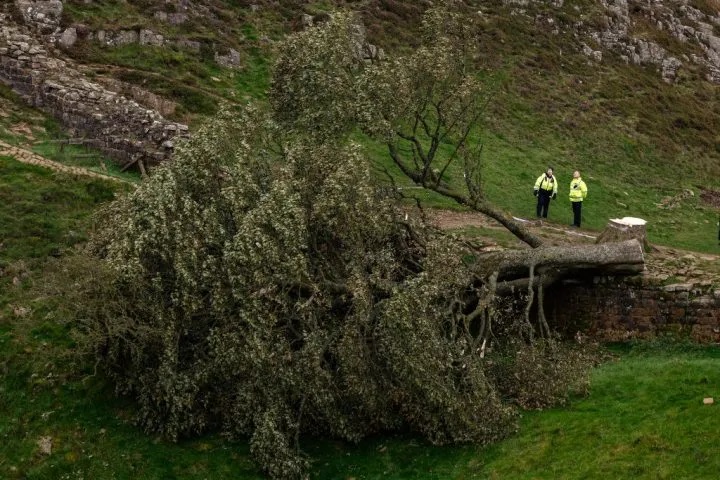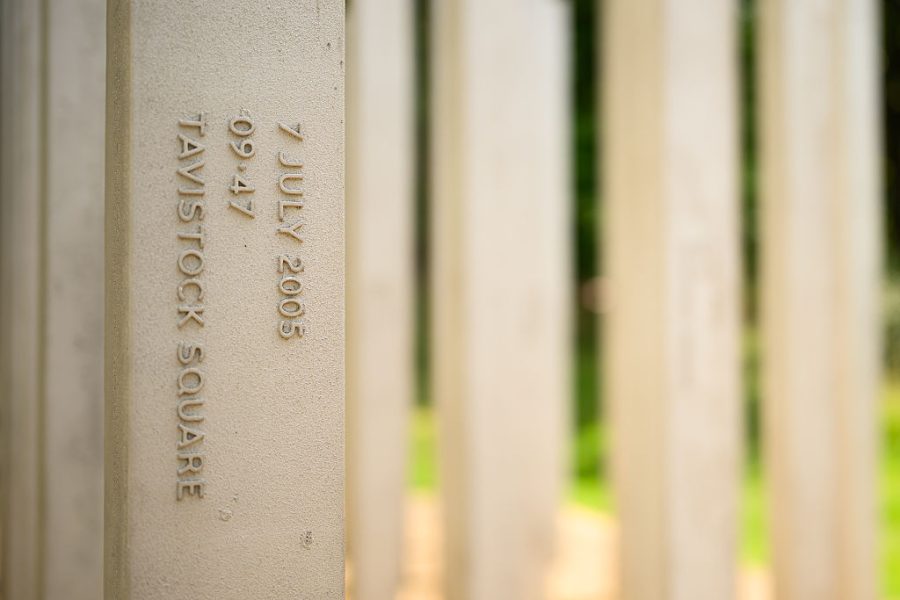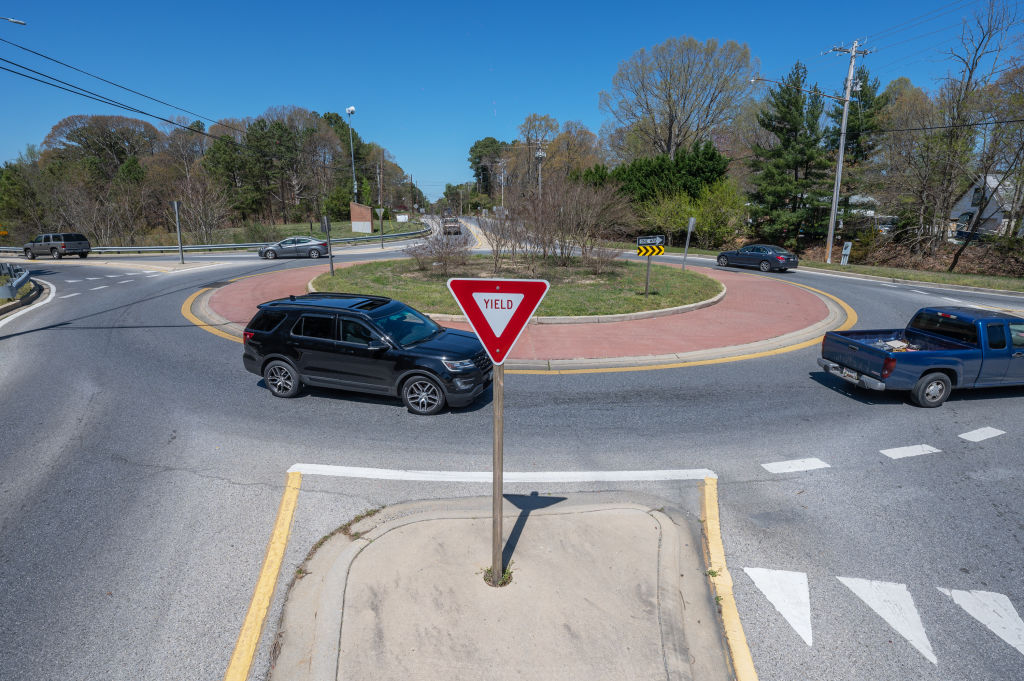One August afternoon, my dad, my uncle and I were walking along England’s Hadrian’s Wall. It was pouring. Our shoes were full of water, our glasses had steamed up, and our raincoats were sticking to our bodies.
Seemingly out of nowhere, we came upon a little dip in the cliff, within which was nestled a tall tree. We stopped under the cover of its wide branches and five-lobed leaves and ate our ham and cheese sandwiches. There was no one else in sight and we had this beautiful part of Northumberland to ourselves.
Thanks to an individual act of vandalism, the Sycamore Gap is now really a gap
That tree was called the Sycamore Gap, and on Thursday a vandal cut it down. One-hundred-foot high and 300 years old — it was slashed down in an instant with a chainsaw.
People, particularly in Northumberland, are outraged. The Sycamore Gap was a popular place for marriage proposals and was one of the most-photographed landscapes in Britain. It was globally renowned and helped draw tourists to Hadrian’s Wall and the Northumberland National Park. My uncle, who was visiting from Colombia, had wanted to see the tree since watching Kevin Costner’s Robin Hood: Prince of Thieves.
But Britain’s natural heritage is under threat from more than just ecocidal vandals. The day before the sawing of the Sycamore Gap, the State of Nature report revealed that one out of every six British species is at risk of extinction. London’s emblematic plane trees, genetic variants of the sycamore, adorn landmarks such as Berkeley Square and accompany the Victoria Embankment from Blackfriars to the Houses of Parliament. Last summer’s heatwave killed them in their hundreds.
All the while, the government reneges on climate obligations that would contribute to the protection of British nature. Last week, behind a lectern with a slogan that read “Long-term decisions for a brighter future,” Rishi Sunak postponed the ban on buying first-hand gas and diesel cars until 2035. He also downsized targets on sustainable heating an insulation. Then, on Wednesday, the Department for Energy and Net Zero approved a massive new North Sea Oil Field. These announcements came despite the government’s independent climate advisory body warning in June that Britain was behind on its environmental targets and legal commitments.
When asked about the felling of the Sycamore Gap, Sunak said he couldn’t comment while the police were conducting their investigation, but added that the government is “absolutely committed” to protecting Britain’s natural heritage. “Absolute commitment” would look very different. Sunak may have changed the name of the Whitehall department to “Energy and Net Zero,” but his green agenda looks increasingly black.
Thanks to an individual act of vandalism, the Sycamore Gap is now really a gap. Wood from the tree could be used for a monument or a public art installation, and arborists might try to grow a new tree from a seed of the original sycamore. Such proposals might commemorate the beloved tree but won’t restore it to the Northumbrian landscape.
The gradual consequences of a hotter planet may be harder to appreciate than the effect of a chainsaw, but they will still be severe. To protect Britain’s and the world’s natural heritage, the outrage at the demolition of the Sycamore Gap must be directed more widely than to just one tree.
This article was originally published on The Spectator’s UK website.

























